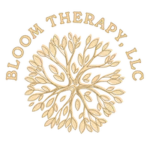Bloom Therapy
Eye Movement Desensitization and Reprocessing (EMDR) in Pennsylvania
Experience the Healing Power of EMDR - A Scientifically Proven Approach to Processing Trauma, Reducing Anxiety, and Finding Relief When the Past Feels Overwhelming.
At Bloom Therapy, we offer a compassionate and effective approach to healing through EMDR therapy. Whether in our cozy practice outside Philadelphia or virtually across Pennsylvania, New York, and Connecticut, we’re here to help you process trauma, regain control, and move forward with strength. Our skilled EMDR therapists blend evidence-based techniques with heartfelt support, guiding you through life’s challenges with care and expertise. You don’t have to navigate this journey alone—we’re here to walk with you every step of the way.

What is EMDR?
EMDR (Eye Movement Desensitization and Reprocessing) therapy is an evidence-based approach designed to help you reprocess traumatic memories and reduce their emotional impact. By guiding you through controlled eye movements, EMDR therapy facilitates the reprocessing of distressing experiences, enabling lasting healing and emotional relief. Unlike traditional talk therapy, EMDR focuses on how memories are stored in the brain and helps resolve lingering distress at its root. Whether you’re working through anxiety, PTSD, grief, or other emotional challenges, EMDR provides a structured and effective way to regain a sense of balance. At Bloom Therapy, we offer EMDR in a supportive, personalized setting—both in person and virtually—so you can access this transformative therapy wherever you are.
If you’re joining virtually, EMDR can be just as effective through secure online sessions, where we guide you through the process of using bilateral stimulation techniques adapted for remote therapy, ensuring you receive the same level of support no matter where you are.
EMDR Therapy l Remote in Pennsylvania, Connecticut, New York
How EMDR Works
EMDR at Bloom Therapy provides a structured, supportive approach to processing distressing memories and reducing emotional overwhelm. This evidence-based method helps the brain reprocess trauma, promoting healing and emotional resilience.

Common Myths About EMDR Therapy
Myth: EMDR is only for PTSD.
Reality: While EMDR is highly effective for PTSD, it is also used to treat a wide range of mental health concerns, including anxiety, depression, grief, phobias, chronic pain, and even self-esteem issues. It can be beneficial for anyone struggling with unresolved distress.
Myth: You must vividly relive your trauma for EMDR to work.
Reality: Unlike traditional talk therapy, EMDR does not require clients to go into detail about their traumatic experiences. The focus is on reprocessing the memory in a way that reduces its emotional charge. Clients recall the event while engaging in bilateral stimulation (eye movements, tapping, or sounds), helping the brain process it in a less distressing way.
Myth: EMDR erases memories
Reality: EMDR does not erase memories. Instead, it helps reprocess distressing experiences so they are less emotionally overwhelming. The goal of EMDR is to allow you to recall past events without the intense emotional distress that may have been associated with them. You will still remember the event, but it will feel more manageable and less triggering over time.
How EMDR might be used in counseling

EMDR for Trauma
Trauma can leave lasting emotional and physical imprints, making it difficult to feel safe or at ease. EMDR helps reprocess distressing memories, reducing their emotional intensity so they no longer feel overwhelming. By using guided eye movements or other forms of bilateral stimulation, EMDR allows the brain to store traumatic experiences in a healthier way. Over time, this process helps lessen triggers, ease emotional distress, and restore a sense of control, allowing you to move forward with greater resilience.

EMDR for Depression
Depression can be rooted in past experiences, negative self-beliefs, or unresolved emotional pain. EMDR works by identifying and reprocessing these underlying factors, helping to shift patterns of thought and emotions that contribute to persistent sadness or hopelessness. This approach can be particularly helpful when depression is linked to trauma, grief, or past adversity. By rewiring the brain’s response to distressing memories, EMDR fosters emotional relief, renewed self-worth, and a greater sense of well-being.

Integrating EMDR with Art Therapy
Curious about art therapy vs EMDR? While art therapy focuses on creative expression to help process emotions, EMDR targets the reprocessing of traumatic memories through bilateral stimulation. At Bloom Therapy, we sometimes integrate EMDR and art therapy to offer a more holistic approach. This combination—often referred to as EMDR art therapy or EMDR and art therapy—can be especially effective for clients coping with intense grief or sexual trauma.

The Flexibility of Online EMDR in Pennsylvania, New York, and Connecticut
Yes, EMDR works effectively in a virtual setting!
At Bloom Therapy, we offer secure and effective online EMDR therapy, allowing you to receive personalized care from the comfort of your home. Our remote sessions are run exactly the same as in-person sessions which utilize EMDR. This flexible approach not only makes our services more accessible across Pennsylvania, including Philadelphia and Pittsburgh, but also allows you to maintain a consistent and effective treatment plan regardless of your location.
If you’re searching to find an EMDR therapist, Bloom Therapy is here to help. Whether you’re new to EMDR or continuing your healing journey, our virtual sessions provide a powerful means of achieving emotional balance and self-discovery, offering flexible ways to heal remotely in Pennsylvania, Connecticut, and New York.
EMDR FAQs
How long does EMDR take to work?
Is EMDR similar to hypnosis?
Is EMDR effective for sexual trauma?
Do you offer both in-person and remote EMDR sessions?
Get Started on Your Healing Journey
How to Get Started with EMDR Therapy
1
Schedule a Free Consultation
Connect with Jen to see if Bloom Therapy is the right fit for you.
2
Explore Your Options
3
